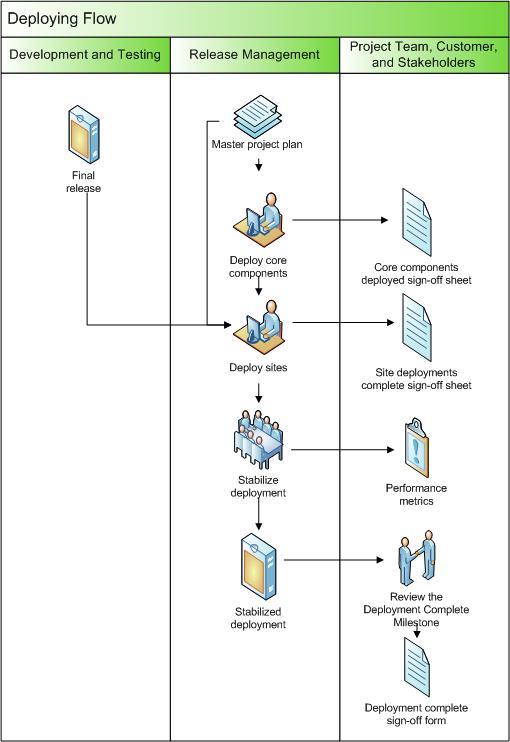CSC/ECE 517 Fall 2013/ch1 1w09 hs: Difference between revisions
No edit summary |
No edit summary |
||
| Line 19: | Line 19: | ||
Capistrano is a Ruby program that gives you a set of advanced tools to deploy web applications to your servers. With Capistrano it’s also possible to deploy to many machines at once. | Capistrano is a Ruby program that gives you a set of advanced tools to deploy web applications to your servers. With Capistrano it’s also possible to deploy to many machines at once. | ||
Capistrano offers many advanced options and can be used to deploy many kinds of applications. | Capistrano offers many advanced options and can be used to deploy many kinds of applications. | ||
It supports the scripting and execution of arbitrary tasks, and includes a set of sane-default deployment workdflows. | |||
Capistrano can be used to: | |||
Reliably deploy web application to any number of machines simultaneously, in sequence or as a rolling set | |||
* To automate audits of any number of machines (checking login logs, enumerating uptimes, and/or applying security patches) | |||
* To script arbitrary workflows over SSH | |||
* To automate common tasks in software teams. | |||
* To drive infrastructure provisioning tools such as chef-solo, Ansible or similar. | |||
Capistrano is also very scriptable, and can be integrated with any other Ruby software to form part of a larger too. | |||
== Heroku == | == Heroku == | ||
Revision as of 19:42, 16 September 2013
Code Deployment and Release Management with Rails
Code Deployment or Software Deployment and Release management with Ruby on Rails uses various tools such as Capistrano, Heroku, Mina, Vlad, Inploy etc. These automated tools are frameworks used to write and execute commands in parallel remote machines and thus ease the process of deployment and management of various applications.
Introduction
Deployment is a process of transferring your application onto a production server to make it available for other users. This process involves various activities and transitions between them. Though the general procedure remains same, the specific requirements vary with the software system.

Why Automation?
Deployment Automation tools
Capistrano
Capistrano is a Ruby program that gives you a set of advanced tools to deploy web applications to your servers. With Capistrano it’s also possible to deploy to many machines at once. Capistrano offers many advanced options and can be used to deploy many kinds of applications.
It supports the scripting and execution of arbitrary tasks, and includes a set of sane-default deployment workdflows.
Capistrano can be used to:
Reliably deploy web application to any number of machines simultaneously, in sequence or as a rolling set
- To automate audits of any number of machines (checking login logs, enumerating uptimes, and/or applying security patches)
- To script arbitrary workflows over SSH
- To automate common tasks in software teams.
- To drive infrastructure provisioning tools such as chef-solo, Ansible or similar.
Capistrano is also very scriptable, and can be integrated with any other Ruby software to form part of a larger too.
Heroku
Vlad
Comparison between Capistrano/Heroku/Vlad
| Criteria | Capistrano | Heroku | Vlad |
|---|---|---|---|
| "Take some more [[tea]]," the March Hare said to Alice, very earnestly. "I've had '''nothing''' yet," Alice replied in an offended tone, "so I can't take more." "You mean you can't take ''less''?" said the Hatter. "It's very easy to take ''more'' than nothing." |
<p>"Take some more <a title="Tea" href="/wiki/Tea">tea</a>," the March Hare said to Alice, very earnestly.</p> <p>"I've had <strong>nothing</strong> yet," Alice replied in an offended tone, "so I can't take more."</p> |
"Take some more tea," the March Hare said to Alice, very earnestly.
"I've had nothing yet," Alice replied in an offended tone, "so I can't take more." "You mean you can't take less?" said the Hatter. "It's very easy to take more than nothing." |
Conclusion
References
technet.microsoft.com
<references/>